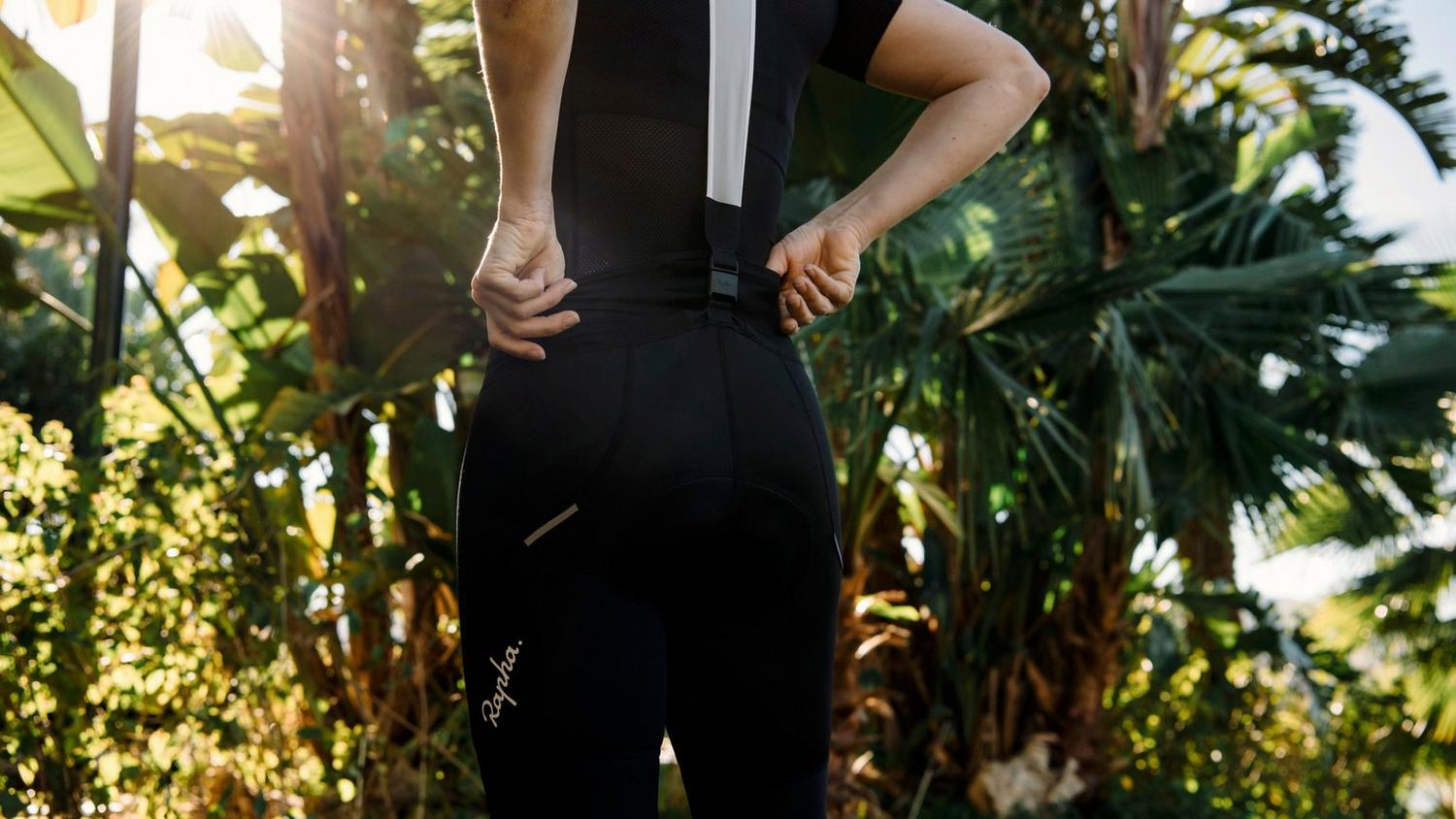10 cycling must-knows
Whether you’re new to cycling and can learn from their experiences, or just want to enjoy commiserating with your fellow cyclists about the misadventures of learning to ride—here are a few of our top picks for things we wish someone had told us!
The (no) underpants conundrum
We heard this from many of you, because it can definitely be a delicate question to raise in the sometimes-intimidating environment of a bike shop. As A. Lansley recalls, “I remember wondering for ages whether I should wear pants underneath my cycling shorts! I was too embarrassed to ask the men in the shop. It’s the first thing I tell women cyclists now. No pants needed!”

Embrace that excuse to go commando
Speaking of bike shorts, although everyone needs to find what feels best for them to ride in, F. Radomska advises that “there’s a reason for Lycra-padded bike shorts, they’re comfy as hell. Lycra tops, however, are non-essential. Feel free to give them a miss if they make you self-conscious.” Do what works for you, but don’t dismiss padded shorts until you’ve tried them for yourself.
Not all pit stops belong mid-ride
Many responses had to do with discovering the joy of cake and coffee stops, and as C. Paterson declared, “the best excuse for eating cake is ‘I cycled here.’” Beer was also high on the list of motivating rewards after a long ride. But it’s a good idea to be strategic when it comes to treating yourself, as C. Drake said, “cake & coffee are great, but hills can be a nightmare after a pint of cider.” She reassured us she was “relaying this information for a friend ☺.”
Pay attention to where it hurts
When it comes to how much pain is normal in cycling, E. Haigh says, “I wish someone had told me that it shouldn’t be hurting so much in the saddle, I figured it was just part of cycling and then became convinced I had a kidney infection because I was in so much pain while peeing. It turns out it was simply just having the wrong saddle. If your position is hunched or more upright, it might be because you are protecting the front of your lady parts! A simple saddle change can fix a lot.” Moral of the story, your sitting bones might hurt a bit and that takes some getting used to, but it is not normal for the front end to be in pain. You could be causing serious damage, so go see a bike fitter or saddle specialist.

Make friends with your tyres
H. Wilson advises all to pay attention to those tyres. “I wish someone had told me about tyre pressure! I was pumping my tyres up once every six months or so, but pumping them up to the maximum pressure on the sidewall—so it was often really uncomfortable or it was basically flat, and I got SO many punctures!” Lesson learned here? Tyre pressure is important and should rarely be pumped to maximum. You’d be well-served to check it before every ride and adjust for the surface you’ll be riding on.
Practice those repairs at home
Carrying a repair kit you know how to use is crucial if you’re going to set out for a long ride, so it’s better to brush up on your skills without the stress of being stranded on the road. As J. Richards smartly advises, “practice taking tyres & inner tube on/off at home before your first puncture, and always carry a bit of cash, it’ll come in handy for coffee stops and repairing a split tyre (can be used to stop the tube bulging out). Learn the maintenance basics and you’ll be able to ride anywhere you like and take care of yourself.”
Don’t be afraid of sore legs (or to walk it on up)
There were also a lot of comments regarding the reality that cycling is hard! L. Wambui says she had to learn to embrace sore legs, “don’t stop when you feel the pain, that’s where the unlocking really starts. When I was new, I would get off the bike whenever my legs started hurting.” Not a lot of progress being gained with that approach, but you also need to be patient with your body, and as F. Ridley said, “remember you can get up anything, as it’s ok to walk!”

You will make progress if you stick with it
That being said, as K. Granger reminds us, “it really does get easier. My first club ride nearly killed me and now I do that distance twice a week for fun!”
Find your own style of riding
There is no right way to develop your relationship with cycling. What A. Bird wishes someone had told her? “You don’t have to have an expensive bike or kit, a certain look, minimum mileage, or even join a group or get Strava. You just have to do exactly what you want. I started focusing too much on the details last year and it really started sucking the fun out of it. I’ve gone back to basics and am feeling good on my bike again.”
You won’t know until you ask
Of course, these are just a few of the many issues that might come up as you get used to being in the saddle. Remember that there are no silly questions and, as L. Hurley reassures, “if there’s one thing cyclists like to talk about, it’s bikes and anything bike-related. Don’t hesitate to ask if you’re unsure about something.”
All in all, keep in mind that one of the best parts of cycling is the community that surrounds it. Talk to other cyclists, build your confidence, learn about your bike, and most of all—have fun!




